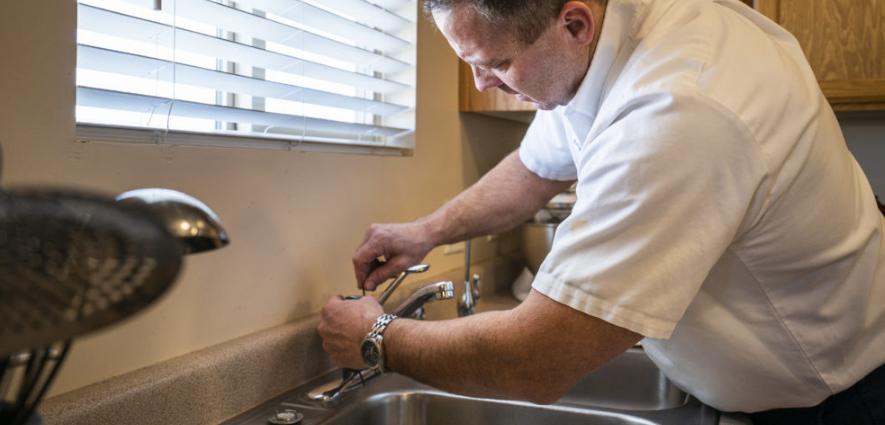When you have a problem with your sink, it can be frustrating to know where to begin. There are many different types of sinks and faucets, so it’s difficult to know exactly what the cause of the problem is. The good news is that there are some common sink repair problems that all sinks experience at one time or another, and there are also ways to solve them.
How Do I Fix My Sink?
If your sink is leaking, overflowing or draining slowly, these are all signs that there is an underlying problem that needs attention. The good news is that most of these issues can be fixed easily by using simple tools and supplies like plumbing tape and pipe dope. If you need help determining if your sink is leaking, check out our article on how to fix a leaky faucet here!
- Clogged Drains
Hairballs from washing machines, sinks and bathtubs can clog drains pretty quickly. Regularly cleaning hair from your drains will help prevent this problem from happening in the first place. If you already have a clogged drain, try pouring hot water down it — this should loosen the hairball or other debris so that you can remove it easily with tongs or pliers. You may also want to try using a chemical drain cleaner if food particles are stuck in your pipes — follow the manufacturer’s instructions carefully before using any chemicals!
- Toilet Bowl Won’t Flush
If your toilet doesn’t flush properly, there might be something blocking it in the pipes below (like a toy or other object). You can try plunging it first by using a plunger to dislodge whatever is blocking it. If this doesn’t work, then you’ll need a snake tool or auger to clear away whatever is clogging up your toilet bowl drain line (which you can rent at most hardware stores).
- Leaking Faucet
If your faucet drips every few seconds, it’s time for a new washer. To replace one, turn off the water with a wrench or pliers. Then remove the nut under the handle with adjustable pliers or channel lock pliers. Lift off the handle and remove the screw holding the stem in place. Take out the old washer and replace it with a new one. Screw everything back together and tighten until snug — don’t overdo it or you could strip out your threads! Now turn on the water and make sure everything works properly before replacing any parts back into place on top of your vanity cabinet or sink basin (if applicable).
- The Sink Won’t Drain
If your sink is slow to drain or won’t drain at all, there’s probably something blocking it. Check for objects like hair or food particles that may have been flushed down the drain by mistake. If you find nothing in there, turn off the faucet and use a plunger or plumber’s snake tool to clear any blockage in your pipes.
- Sink Leaks
A leaking sink is usually an easy fix, especially if the leak is coming from a loose knob or handle that needs tightening. If the leak is coming from underneath the sink and there is no visible damage, check for broken pipes or tubing under the sink. If there is no obvious plumbing problem, check the rubber washers around your faucet handles and around the drain plug. If they’re cracked or worn out, replace them before tightening up any loose fittings underneath the sink. You can buy replacement washers at any hardware store.
- Fix A Broken Trap
If you have a plastic drain trap (most do), simply replace it with another one that’s identical to your old one (if you can’t find one exactly like it). If yours was made from metal or cast iron, try replacing only the broken part rather than throwing out an entire fixture; this will save money in the long run and help prevent future leaks from developing elsewhere in your plumbing system.
- Leaky Handle
The first thing to check when you have a leaking faucet is whether the problem is coming from the handle or spout (where the water comes out). If the handle is moving, but water isn’t coming out, there may be something stuck inside blocking its movement. You may need to remove some parts under the sink and see if there’s anything preventing full movement of the handle. If it turns freely but still leaks, you may need to replace the seals or gaskets inside. If this doesn’t solve your problem, look at replacing spouts as well as handles if they’re separate pieces that can be replaced separately (rather than one piece).
Conclusion:
Hopefully, this list has given you some insight into how to repair items around the house. While we may prefer to call in a professional for larger jobs, small sink repairs like these can be done by anyone. Furthermore, certain repairs may be less expensive to perform yourself than they would be to hire a professional. If nothing else, this article should give you ideas on how to go about tackling some of your own home repairs.

